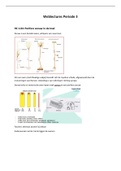College aantekeningen
Psychotherapy - lecture notes but better
- Vak
- Psychotherapy
- Instelling
- Universiteit Leiden (UL)
These are notes taken from all the weblectures of Psychotherapy . I wrote this summary in such a way that you don't need to re-watch all the lectures and are still able to pass.
[Meer zien]














